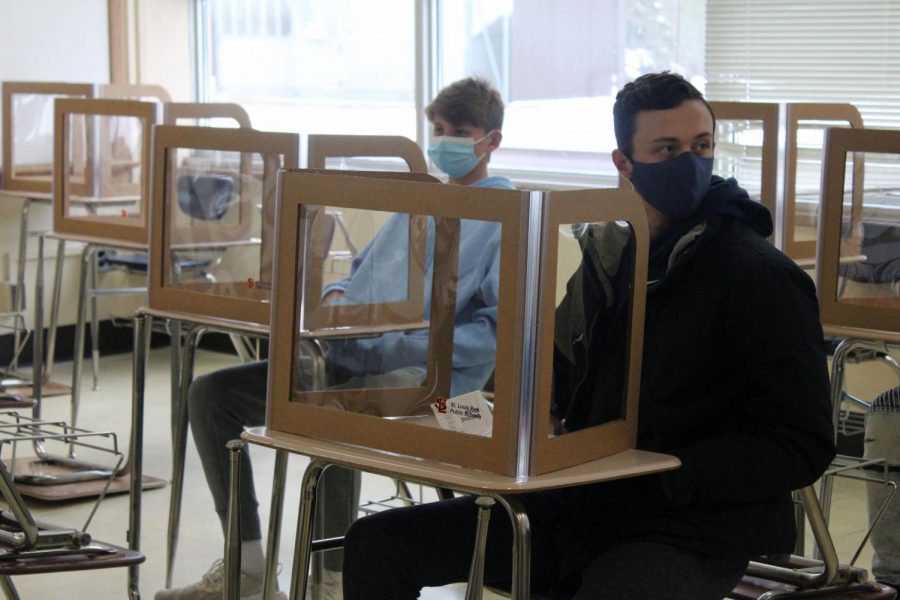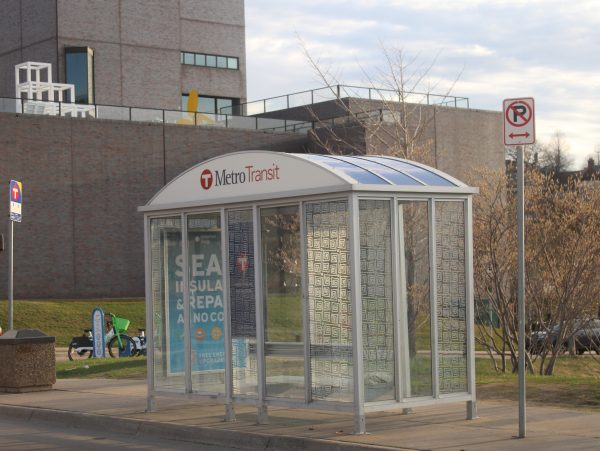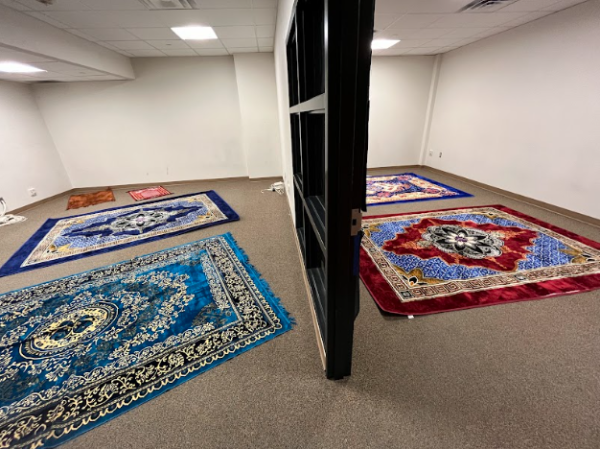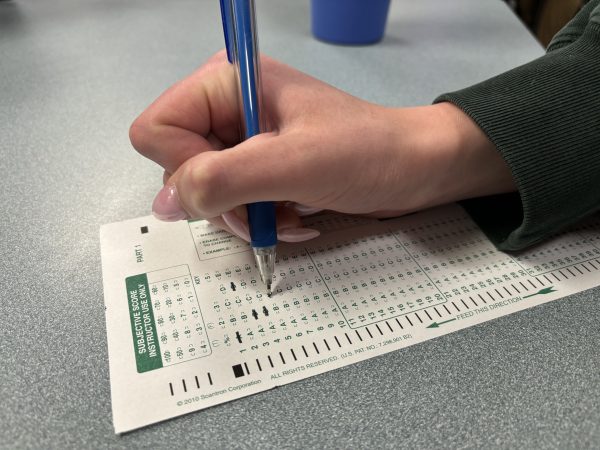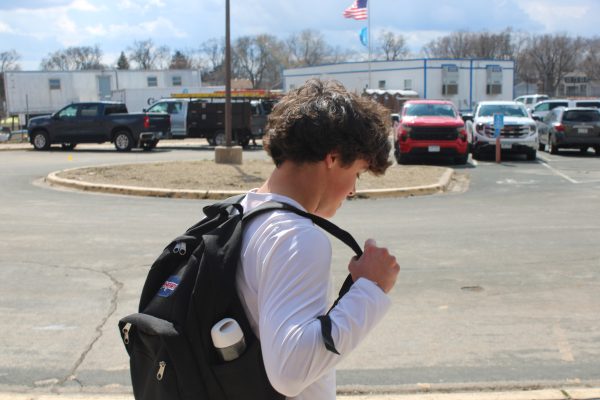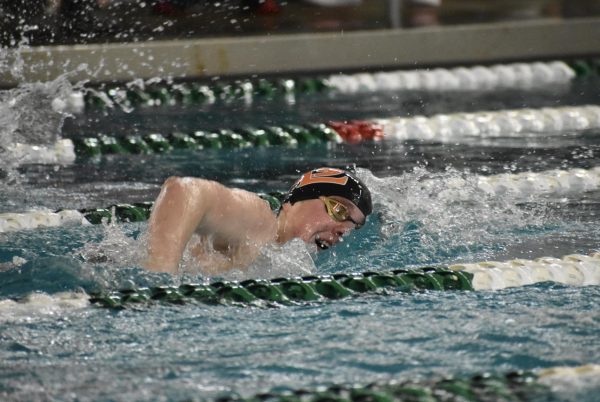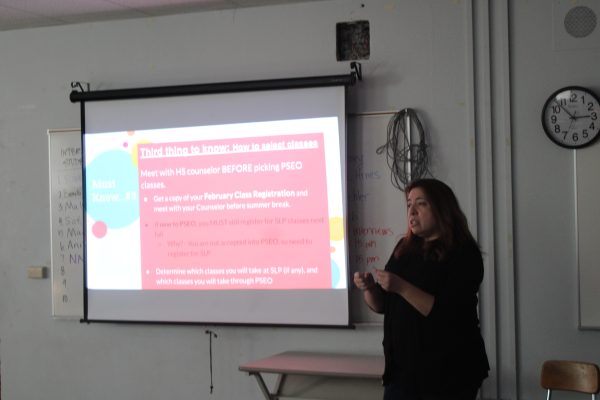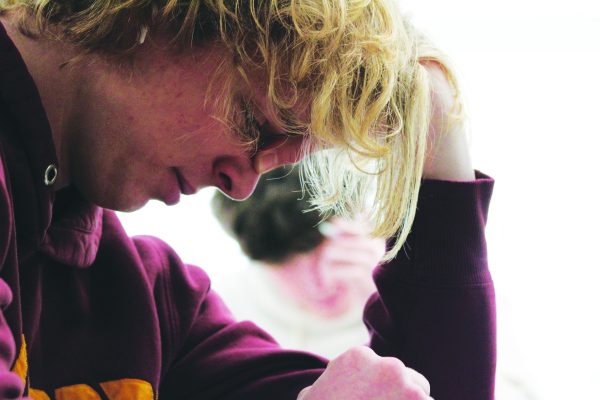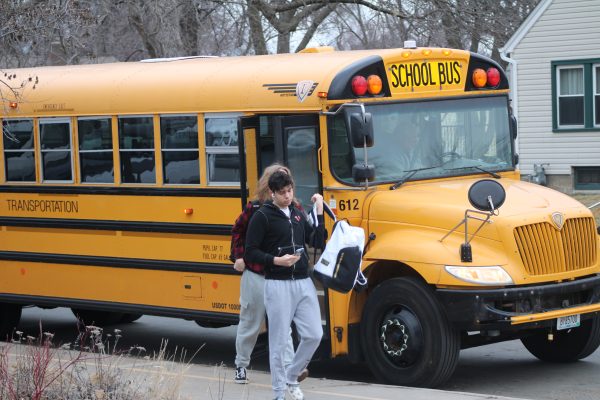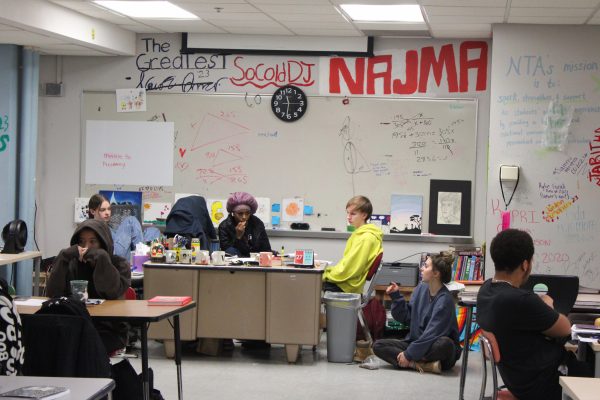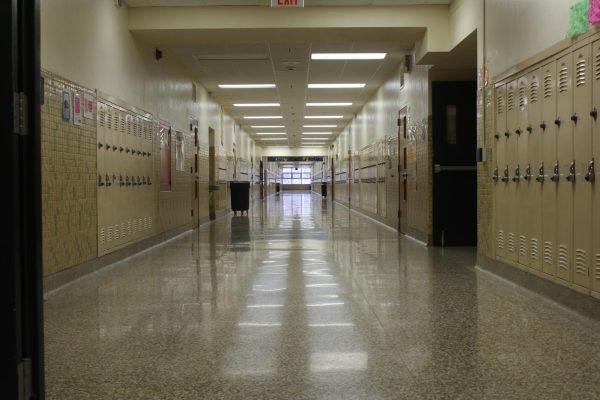District prepares for hybrid learning
School Board approves recommendation to send students back
Freshmen Graham Sullivan and Charlie Odens wait for math class to begin during freshman orientation Oct. 21. Park will return to a hybrid learning model Feb. 22.
Park will get a second shot to start to return to normalcy after the School Board approved a plan for students to return to hybrid learning. According to Superintendent Astein Osei, the focus this time is not just for students and staff to be in the building, but to have a sustainable solution in place.
“Not only will we be going back, but we are working to stay back as well,” Osei said. “The same level of rigor that we apply to our interactions and to our mitigation strategies in school, I would suggest that as a school community, we apply those same levels of rigor and in our personal lives. The more we can do that then we can not only come back to school, but stay in school for the remainder of the year.”
The plan, which was approved by the School Board Jan. 25, will be put into action Feb. 22. Grades six through eight will return at 50% capacity, and freshmen and seniors will return to the high school at 50% capacity. Sophomores and juniors are then to return March 8 at 50% capacity.
Junior Kathryn Haertzen said she doesn’t approve of the plan as she believes upperclassmen should return before underclassmen due to heavier workloads and college preparation.
“I think (the School Board) were prioritizing the wrong grades,” Haertzen said. “I believe that juniors and seniors should have been sent back first because we have a lot to prepare for, we’re going to college (in) a couple years and we have to do the ACT and stuff.”
According to School Board Chair Mary Tomback, the School Board had to take into consideration the safety of the teachers as well as the needs of the students while trying to find the best plan to return.
“The concerns that we’ve gotten from staff, about their fears for their own safety, weighed heavily on us; how do we balance those with the needs of so many of our students to get back into the building,” Tomback said. “Superintendent Osei talked to us about his meetings and how many students feel like they want to be brought back. We have gotten so many emails from parents truly begging us to get their kids back to school. So I’m looking at their experiences also and just trying to balance all of these concerns with the data.”
Haertzen said she isn’t overly concerned about the risk of returning as she trusts the COVID-19 guidelines Park has implemented.
“School compared to sports, or even just hanging out outside of school, is just not as big of a risk factor,” Haertzen said. “Park has taken a ton of precautions with keeping students away from each other, and especially if we’re doing 50%, our school isn’t that big and we’re not that high risk.”
Not only will we be going back, but we are working to stay back as well.
— Astein Osei
Freshman Audrey Delorme said she feels as if the plan is a little too ambitious and wishes the district would take smaller steps to start.
“It would be better to start off with 25% people, and then if that seems to be working then maybe move up or just play it by ear,” Delorme said. “If online school is working for a lot of people, then I don’t see a need to rush into getting people back in the building.”
Osei said through the Minnesota COVID-19 vaccine pilot program, the state has provided each school district with a certain number of slots where staff members can make appointments to be vaccinated. Park has prioritized getting primary educators vaccinated as grades K-2 have been in hybrid since Jan. 21. There have been some discrepancies between the number of slots allocated to the district and the number of vaccines actually available, according to Osei.
According to Osei, the district will prioritize any teachers who were granted slots and didn’t receive a vaccine in the next round of allotments and continue to do so as time goes on.
“What we are in the process of doing right now is trying to figure out an appropriate strategy to collect data on those staff members that did not get appointments, so that when we get our next allotment of slots that we can prioritize those people first, and then add in the next layer of staff in our prioritization,” Osei said.
According to Tomback, the district needs more consistency and organization from the state regarding vaccines in order for them to be able to plan properly.
“We have to be able to (vaccinate more teachers), but unfortunately it’s not within our control; we only have the vaccines that are allocated to the district. The state needs to do more, they need to be more helpful to us.”
Though it is optimal for all staff members to be vaccinated by the return date, it is not a requirement from the state in order for schools to return to either an in-person or hybrid model. While Osei said he hopes to get all staff vaccinated in time, he is aware that this goal may be difficult to achieve as the kinks of vaccine rollout are worked out.
“Ideally we would love for everybody to be vaccinated by that date, which I realize is a very lofty and hopeful goal,” Osei said. “If for some instance educators are not vaccinated by that time, that is not going to stop us from moving forward.”
Delorme said she would prefer that all teachers be vaccinated before students return, not only to protect the teachers, but also the students.
“(Teachers) should all be vaccinated before we go so at least they’ll be safer back in the building. It’s (fewer) people that the students could be exposed to too,” Delorme said.
Tomback said while she isn’t fully confident in the plan, she feels that it is necessary for the School Board to try to find the best possible solution to cater to as many people in the district as possible — both staff and families.
“I always hesitate to speak for my colleagues, but in general, I feel like nobody (on the Board) will love this idea,” Tomback said. “It’s all about balancing interests and risks and trying to do what we think is best for students in the community, hoping that we’re making the right decision.”
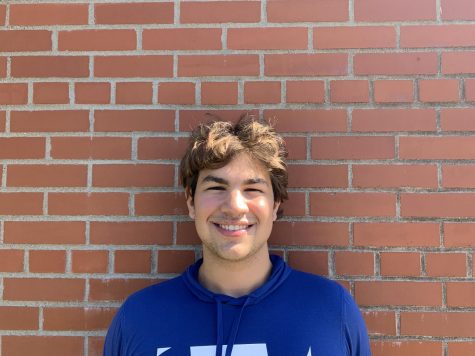
Here’s my bio:
Toby, he/him, managing, cookie dough, who hasn’t gone yet?
Or
Hi everyone, my name is Toby; I'm gonna be the managing editor...

Hi friends! My name is Maddie Schutte and I have the honor of being chief this year with the lovely Talia Lissauer. I’m a dancer both at my studio and...




